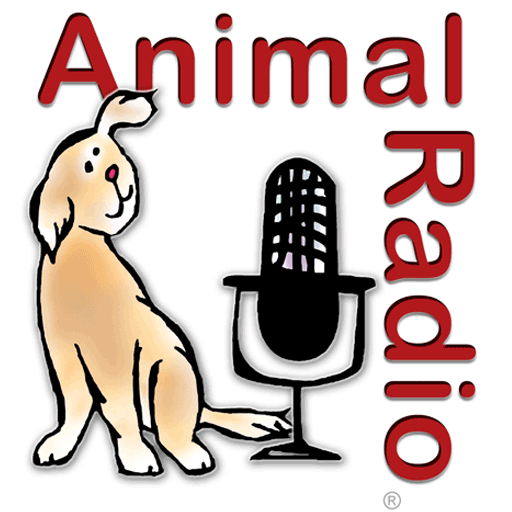The Science Behind Loving Our Pets
John Bradshaw, The Animals Among Us
 Anthrozoologist John Bradshaw says our love for pets is in our DNA. It's likely that if our parents carried the gene, you'll inherently love pets. John explains why humans are genetically encoded to enjoy companion animals in his book, The Animals Among Us: How Pets Make Us Human.
Anthrozoologist John Bradshaw says our love for pets is in our DNA. It's likely that if our parents carried the gene, you'll inherently love pets. John explains why humans are genetically encoded to enjoy companion animals in his book, The Animals Among Us: How Pets Make Us Human.
Twenty years ago pets were outside with dogs in the backyard in their little doghouses, but now they're in the house and we treat them like a family member.
Anthrozoologists have looked societies all over the world, both in the 19th and 20th centuries, which were kind of emerging from the Stone Age, and found that all of those societies pretty much worldwide had pets. However, they were not conventional dogs and cats. Obviously they hadn't had access to those. But what they had done was to take young wild animals out of the wild, adopted them and treated them as family members. So this is not just something that's emerged in western society over the last half-century or so. It is actually something that has been going on in various ways in various forms for tens of thousands of years. And so that's why John thinks it's a really intrinsic cause of human nature. It's something that makes us human.
So why did we choose to make some animals our pets and bring them into our homes and other animals we chose to eat?
John thinks this is a very cultural thing that varies from different parts of the world. Now it's varied across history and there are some parts of the world where dogs, or some kinds of dogs, are considered to be perfectly acceptable as food. On the other side, there are many parts of the world, the United States included and the UK as well, where that's an absolutely abhorrent disgusting idea. So it's not so much the animals themselves. Those have just come on different journeys to where they are now. However, which animals we choose to eat and which animals we choose to regard as family members is something that we just grow up with. We learn it from our parents and from the people around us.
Oftentimes the animals don't go out work they don't bring home a paycheck. So why do we spend so much time and energy and love these animals even though they're unproductive members of society?
John claims the short answer, or the initial answer, is well they make us feel good. Not all of us, which has to be said, people do vary and there just seems to be some genetics behind that. People do vary in how appealing they find animals and how much of a buzz they get from talking to them and stroking them and petting him that kind of thing. And those of us who do get a buzz from that, there's been good science done to show that it's not just something that happens in your mind. It actually changes the hormone circulation in your bloodstream; you get endorphins peaking, which give you that good feeling, a rewarding feeling. You get oxytocin peaking as well, which makes you feel affection for the animal. So there's a good basis for this. It's not just something that people imagine that they've kind of dreamt up over the past few years as something that might be just fun to do.
It's something, which is right there deep down in human nature, to feel this way. What John finds interesting is why do we feel this way. Why have we evolved this thing, which is not going to benefit the other fellow humans, its only going to benefit the animals? He thinks that is why we love and feel affection for animals. It's such an intriguing part of human nature.
So why do some people in one family love animals while others in the same family couldn't care less?
John claims that there's evidence it's genetic. But that maybe sometimes those tendencies don't emerge until adulthood. Some children, whether they copy their parents or kind of go against them, is a very complex issue and it doesn't just apply to animals it applies to all kinds of aspects of bringing up kids. But when people look at adults and how they feel about animals, the two main influences seem to be including the kind of things those people have encountered in their lifetimes since they became adults. So they've had good experiences with pets or they've known other people who've had good experiences. They then tend to feel well disposed towards animals in general. But there is also a genetic influence, which comes through from the parents, but it could of course just be the one parent. So you're going to get an amount of variation.
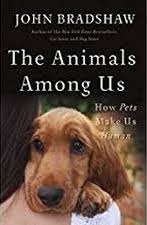 Some people just don't get it. There are some people who have never had a connection to an animal. John tells us it is a lot about experiences. Whether people turn to really becoming animal lovers when they become adults it is about experience. It's not simply about the family you grew up in.
Some people just don't get it. There are some people who have never had a connection to an animal. John tells us it is a lot about experiences. Whether people turn to really becoming animal lovers when they become adults it is about experience. It's not simply about the family you grew up in.
It has been suggested that there really is no influence from your actual family environment. Whether your parents actually had pets or not doesn't seem to affect whether you like them or not.
Right now John doesn't have any pets. The reason for that is that he looks after his grandkids a lot and one of them is very, very allergic. So, he couldn't look after him if had animals. He did have a lot of cats, which died of natural causes around the time that his grandchild was born. When he's a little older, John will get animals once again.
John has had animals around forty-five years now, since he was in college. He likes animals, but from his own perspective, he's not so keen on them that he can't live without them. His interest is also coming from studying them and trying to work out what it is about animals that's appealing rather than simply indulging himself in them.
Does John think new parents should consider bringing a dog or a cat or some kind of animal household to show their children empathy? Animals are also supposed to help children become less allergic to animals if they are exposed to them while they are young.
There are benefits, according to John; to different kinds of allergens we expose our kids to, particularly in the West where the environment is pretty sterile. People in the West seem to keep their apartments and houses very clean. They use a lot of disinfectants in a way that our ancestors did not, as they didn't have access to those things. So our children are not exposed to all sorts of allergens, which our parents and we were exposed to. John thinks that most pediatricians would argue that that's a good thing for children to have pets, not all of them, but most of them would. From John's more of a psychological and developmental point of view, there really isn't proof that pets help children to get on better with other kids. That does actually not seem to have been borne out of the studies that have been done.
But what has emerged is that it helps them to understand life, which is an incredibly important message for children nowadays. Children encounter almost everything through screens in a way, which we didn't nor did our parents. You don't get the full essence of anything through a screen. You get a pre-digested, two-dimensional picture of it, whereas John thinks it's very important that kids grow up knowing about life. That living things are not simply something you can switch off when you get bored with them. That they're there 24/7 and they need you and you need them. Sometimes they are great and cute and sometimes they're messy and annoying.
That's a great life lesson to learn, that you can't expect anything that's alive to be perfect all the time. In broader terms, if we expect the next generation to protect the environment for animals and for themselves, if they don't really understand what an animal is in glorious three dimensions and all the smells and everything else they have, I don't think they're going to be motivated to do that.
You can learn more in John's book, The Animals Among Us: How Pets Make Us Human.
Visit Website
Air-Dried Dog Food
Lindsay Tracy, VP Bus Dev Redbarn
 Thanksgiving is just around the corner and most people will be at home cooking with their furry friends sitting by them smelling all of the delicious food. And of course, it's our instinct to think, "Hey, I'm going to give my dog some human food or even, you know, leftover bones." However, Lindsay Tracy from Redbarn is here to remind everyone that our dogs aren't used table scraps, which could cause some vomiting or diarrhea and even intestinal issues.
Thanksgiving is just around the corner and most people will be at home cooking with their furry friends sitting by them smelling all of the delicious food. And of course, it's our instinct to think, "Hey, I'm going to give my dog some human food or even, you know, leftover bones." However, Lindsay Tracy from Redbarn is here to remind everyone that our dogs aren't used table scraps, which could cause some vomiting or diarrhea and even intestinal issues.
You may not know it, but raw bones, even pre-cooked, could be a risk of contamination. This can cause food poisoning because of the bacteria, which can even be found in cooked bones. These include poultry bones like chicken, turkey and even pork rib bones, which are all pretty fragile. They could also splinter and cause some choking or damage to the digestive tract. You just want to be careful about what you do feed your dog. They really rely on that routine feed.
Of course it's a special time and were eating special food, as most of us don't eat turkey year round, and we want something special for our pets. So what are some other options that we can do instead of giving them all that fatty food?
If you want something for them to chew on while you're enjoying your turkey, look for a chew option sold in a pet store or online, which is safe for them. But before that, you want to think about, okay, what does your dog like or what is their chew capacity? Do they want a light chew, which would fall into maybe an esophagus stick or pork skin, so it's a quicker chew? Do they want a moderate chew, which could be maybe a glazed beef cheek, which could mimic that gravy type of food that you're eating? If you've never heard of a glazed beef check for dogs, it is the cut of a cow from their cheeks. It's a softer, less dense material. It's still hide, but it's a cheek. So it's quicker for your dog to digest.
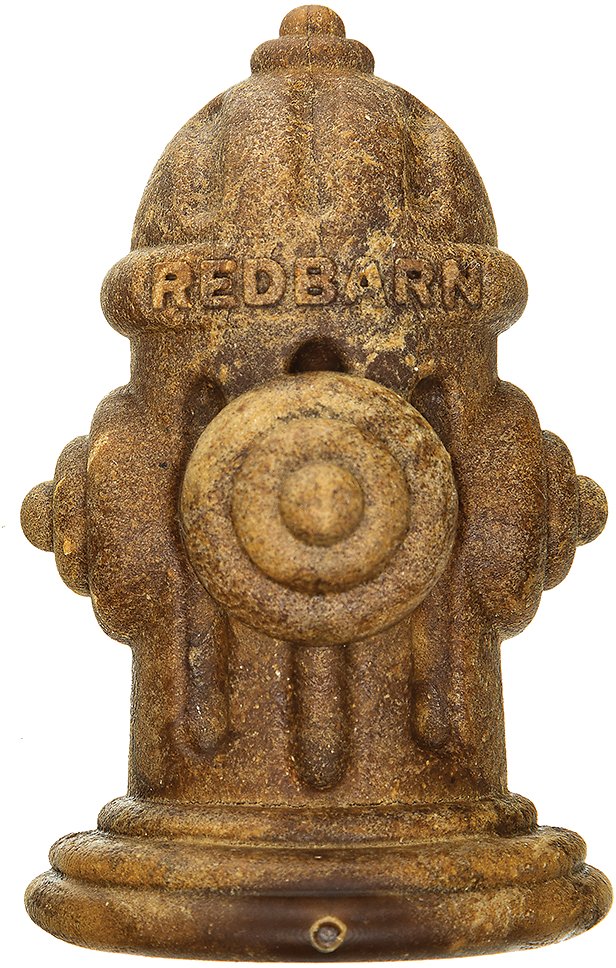 At the animal Radio Studios, we chose the Redbarn Chew-A-Bulls fire hydrant for Ladybug the Stunt Dog to chew on. She wants one every day after her dinner, and it takes her about a half an hour to 45 minutes to completely chew it. It's a whole process. And she has a lot of fun playing with it for the first 10 to 15 minutes. We feel okay about it, because we know it's a good treat. This is because Redbarn takes a lot into consideration about the health of pups when they create a new product.
At the animal Radio Studios, we chose the Redbarn Chew-A-Bulls fire hydrant for Ladybug the Stunt Dog to chew on. She wants one every day after her dinner, and it takes her about a half an hour to 45 minutes to completely chew it. It's a whole process. And she has a lot of fun playing with it for the first 10 to 15 minutes. We feel okay about it, because we know it's a good treat. This is because Redbarn takes a lot into consideration about the health of pups when they create a new product.
So what are those things that Redbarn takes into consideration? First and foremost, they always consider the animal's oral and gut health. They always choose the most wholesome and unique flavorings and they are always targeting natural, as well as the buzzwords out there like no corn, no wheat and no soy gelatin. They also want it to be fully digestible and really safe for your pet.
Redbarn also makes sure before it goes to market that they all give it to their own animals. The even use third-party labs to make sure that they complete digestibility testing, palatability testing, acceptance and even stool testing. Redbarn is really particular about what they take to market.
Along with their great treats Redbarn is releasing a new air-dry dog food. It should be released nationwide by the end of December. This is an exciting launch for them and Lindsay has been testing it with her dogs for the last year and a half or so. She tells us that this is one of her favorite products that they've ever brought to market.
What is air-dried? Isn't all dog food kibble air-dried? Redbarn's process is pretty different from how kibble is extruded. Basically what they receive is a frozen block of raw meat, they then mix that frozen raw meat with additional vitamins and minerals and natural preserves.
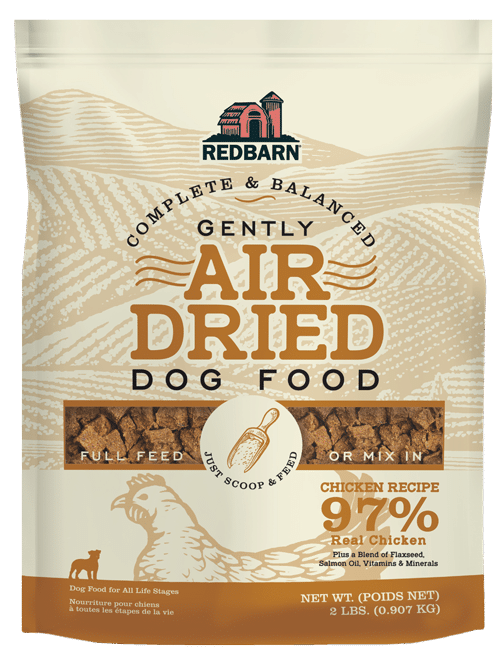 They then cut it into small cubes. They then put those small cubes on a tray and put them into the oven. They're slowly oven roasted and gently air-dried. They do this because it really enhances the flavor. Lindsay says just think about you being in your kitchen.
They then cut it into small cubes. They then put those small cubes on a tray and put them into the oven. They're slowly oven roasted and gently air-dried. They do this because it really enhances the flavor. Lindsay says just think about you being in your kitchen.
Redbarn has really nailed down the texture and the density. When it comes out of the oven, they package it. There are three different proteins that they are using right now, beef, chicken and fish. So what they've done is spent the last few years making sure that they produce the best taste and the best texture.
Redbarn's beef collection includes beef, lung and liver. They have real chicken and then they have real ocean fish. Depending on what they need for the texture, they add some miscanthus grass, some coconut flour and even flax seeds. This makes their food 90+percent pure protein.
Do you have to use it as dried food? No. Lindsay explains that some of their customers like to rehydrate the dried food with water or even bone broth. Some customers are even using this as a training treat. You could also use this as a topper on different textures of food if you wanted to. You could also use it for an extra boost of energy, as it is high in protein. This is great if you're out hiking or you're on the go. Because this smells so good, your pet's going to react to it. Oftentimes in travel scenarios, your dog doesn't want to eat their regular kibble. So this is a great way to spoil them a little bit on the road.
Lindsay's dogs are lucky dogs as they do get to try a lot of different things. Her dogs are Pudge and Peach, both rescue dogs. Both of them were found on the streets, and one is from Illinois and the other from Texas. Now they are her prince and her little princess.
Visit Website
Ticks Hitchhike on City Dogs Too - Dr. Debbie
 Ticks are common parasites known to infect people, pets and spread disease. Over 850 tick species exist worldwide, although fewer than a dozen species are of risk to pets in the U.S. But here in Las Vegas, pet owners often dismiss the existence of ticks with the likes of Bigfoot or the Loch Ness Monster. Think ticks are only a problem for pets that travel or visit the mountains? Think again.
Ticks are common parasites known to infect people, pets and spread disease. Over 850 tick species exist worldwide, although fewer than a dozen species are of risk to pets in the U.S. But here in Las Vegas, pet owners often dismiss the existence of ticks with the likes of Bigfoot or the Loch Ness Monster. Think ticks are only a problem for pets that travel or visit the mountains? Think again.
The Tick Tale
Ticks are parasites known to infect mammals, reptiles and birds and feed on their host's blood. Although of tiny size, ticks ingest 200 to 600 times their weight in a blood meal.
Ticks are attracted to a host's movement, body warmth or exhaled carbon dioxide and then latch on. Through this feeding behavior they can transmit diseases to pets such as Lyme disease, Rocky Mountain spotted fever, Ehrlichia, Babesia and Tularemia. Disease transmission takes some time and may occur after 36 to 48 hours of feeding behavior.
Some ticks can live months or up to a year off its host without a feeding, so year-round prevention is important for pets at risk for continued exposure.
Battling Ticks
There are many topical tick control products available for pets. Speak with your veterinarian for an product that is effective and safe with your pet's individual health in mind. Cats are sensitive to some ingredients, may develop toxicity, and should never be treated with a product labeled only for dogs. Additionally, pet owners using multiple products on their pet should first consult with their veterinarian to ensure safe use of combined products.
In addition to topical tick control, environmental treatment with foggers, sprays or pest control service should be considered for heavy infestations. Limit tick habitat zones by maintaining landscaping, avoiding overgrown grass and keeping shrubs and plants trimmed.
Pet Screening
Perform daily tick checks during tick season. Examine your pet for ticks in areas that the parasites hang out - around the head, behind ears, armpits and between toes.
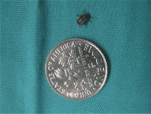 When removing a tick, avoid handling it directly. Wear gloves or handle with Kleenex since ticks can pass infections to people as well. Grasp the tick with tweezers close to the skin. Extract the tick by pulling straight out of skin. Don't squeeze, twist or leave any legs behind. Disinfect the area and dispose of ticks in rubbing alcohol.
When removing a tick, avoid handling it directly. Wear gloves or handle with Kleenex since ticks can pass infections to people as well. Grasp the tick with tweezers close to the skin. Extract the tick by pulling straight out of skin. Don't squeeze, twist or leave any legs behind. Disinfect the area and dispose of ticks in rubbing alcohol.
Here's a photo of a typical tick, born and bred in Las Vegas and recently extracted from one of my Shih Tzu patients named Kane. Kane never leaves the state, doesn't hike in the mountains, and enjoys the comforts of a house-dog lifestyle. A tick was discovered on Kane after a day of supervising his owner's yard work and shrub trimming.
Maybe Kane's story will be an eye-opener for city dwelling pet owners. Pet parasites like fleas, ticks and mosquitoes still lurk in that urban jungle.
Featured veterinarian known as "Dr. Debbie" on national pet radio program, Animal Radio. Ebook author of "Yorkshire Terriers: How to Be Your Dog's Best Friend"; "Pugs: How to Be Your Dog's Best Friend"; "Mini Schnauzers: How to Be Your Dog's Best Friend"; and "Shih Tzu: How to Be Your Dog's Best Friend." Dr. Debbie's books.
Visit Website
5 Advantages of Adopting A Senior Pet
Robert Semrow, Listomania
 November is Adopt a Senior Pet month and there are so many reasons to take this cause to heart! Every pet up for adoption needs a forever home and there are some really important and gratifying reasons to adopt a senior pet.
November is Adopt a Senior Pet month and there are so many reasons to take this cause to heart! Every pet up for adoption needs a forever home and there are some really important and gratifying reasons to adopt a senior pet.
So let's begin with one that can be very important as well as convenient for those with a busy lifestyle or someone wanting the transition to be a smooth one. Training a young pet is a task and one that is often filled with tests of patience, will and intelligence. Senior pets are often already trained, have routines and/or have good manors. Yes, they may have a few mannerisms that you may need to redirect or retrain, but chances are that you will find a senior pet has a strong foundation for you to work with. And before anyone tells you that old dogs and cats can't learn new tricks - that's absolutely false.
Next up is the reality that they have likely adjusted to being alone or on their own for extended periods of time and are already adept at finding peace in that alone time. Often, younger pets need constant supervision and attention or bad habits can develop, including high anxiety levels which can lead to a lot of destroyed furniture or shoes.
One of the more wonderful things, for those wanting a specific kind of pet with a specific set of traits and personality, is that a senior pet's personality is already developed and on display. You should be able to tell if they are going to need to be the life of the party or are just going to chill out and be your chill mate. This can be a huge advantage, as you can determine how they will fit in to your lifestyle and just as important, how you will fit in to theirs.
Older pets are more likely to integrate in to the family quicker as well. They don't have to be taught the value of a loving family. They often seem to know that they were blessed to be brought in to a family and work to ingratiate themselves in to the family.
 One last great thing about adopting a senior pet is that you can really identify the type of breed and characteristics you want and find that. There are pure breeds, mixed breeds, completely trained, completely active, completely chill and more. Additionally, you can see how a senior pet integrates with your current pets much quicker. So, it's much easier to "know what you are getting" in a senior pet, then to "hope to grow and train them" into the pet you want.
One last great thing about adopting a senior pet is that you can really identify the type of breed and characteristics you want and find that. There are pure breeds, mixed breeds, completely trained, completely active, completely chill and more. Additionally, you can see how a senior pet integrates with your current pets much quicker. So, it's much easier to "know what you are getting" in a senior pet, then to "hope to grow and train them" into the pet you want.
Every pet needs a home and every home has a different need. Embrace that you are giving a senior pet the best home possible for it's senior years and know that you made a huge positive difference in this pet's life. It will be rewarding for both you and your senior pet!
Share your Senior Pet tips on our Animal Radio Facebook Page.
Visit Website
Animal Radio News - Lori Brooks
 Is Your Pet A Southpaw?
Is Your Pet A Southpaw?
The term 'Southpaw' refers to left-handed people, but your pet might also be a southpaw. Veterinary researcher Dr. Janice Lloyd and her students researched the handedness of animals, but not just dogs and cats, they also studied horses and goats. Dr. Lloyd states that while only 10-percent of humans are lefties, nearly 50-percent of dogs favor their left paw, but that fish prefer to swim in a right-hand direction or clockwise. Her research also suggests that all kangaroos appear to be left-pawed and Sulphur-Crested Cockatoos are all left-footed. What's the difference between lefties and righties? Handedness is a form of laterality, which is the preferential use of one side of the body over another. For domestic pets it seldom makes a difference to their lives, but for racehorses that are required to run around tracks in a specified direction, it can mean the difference between a winner and a wannabe. Studies of guide dogs showed that right-pawed dogs tended to pass their training twice as often as left-pawed dogs. Another potential advantage is that right-handed animals appear to have a heartier immune system than left-handed people. Left-handed animals and humans are also often believed to be more stress-prone than right-handed animals. Dr. Lloyd's students have also began studying the paw preference of cats in shelters. They tried find out if there are more left-handed animals or more right-handed animals ending up in shelters. You can conduct a simple test to determine your pet's paw preference at home. Since animals will often reach for a treat or toy with their preferred paw, watch which side they use. Then repeat the test exactly the same way 50 times and that can give you an indication. A result of more than 32 instances out of 50 of using the same paw would suggest your pet does have a preference.
 Woman Says Goodbye To Her Dog - Twice
Woman Says Goodbye To Her Dog - Twice
A New Jersey woman who thought her dog was dead believed that her 15-year-old Mini Pinscher named Caesar had been euthanized five months earlier at her vet's office. However, she then found out that the dog had actually been living with an employee of the vet. Caesar's owner had even picked up his collar, paid the bill and received a letter from the staff with their condolences. The woman received an anonymous tip from someone who told her that her dog was still alive and in the care of a vet technician that worked at the hospital but that the veterinarian no longer worked there. The owner called the police who ordered the vet technician to return Caesar. Unfortunately, Caesar was in worse health than he was five months previously so the owner took him to another vet and said her goodbyes to Caesar again.
Bring Your Dogs To Meet Mickey
Four hotels at Disney World allow guests to bring their dogs along on vacation. The four hotels in the program are: Disney's Yacht Club Resort, Disney Port Orleans Resort-Riverside, Disney's Art of Animation Resort and Cabins at Fort Wilderness Resort & Campground. The Yacht Club adds $75 to daily room rates for canine guests, the other three charge $50 per day. Your dog will also receive a welcome kit with a dog mat, feeding bowls, ID tags, poop bags and puppy pads plus a dog walking map of the property. Two dogs are permitted per room.
Facebook Data Shows Differences Between Dog and Cat People
Facebook is all about the data and they've even jumped into the dog person vs. cat person arena. Through its data arm, Facebook combed through its user base collecting information from 160,000 users in the United States who shared photos of cats or dogs (or both). They used object recognition technology to identify photos. Here is some of what they found: Dog people have more friends. On average, dog people have 26 more Facebook friends than cat people. Cat people are 2.2 times more likely to friend other cat people, whereas dog people are 1.8 more likely to befriend other dog owners. Dog people are more likely to be in a relationship. Cat people are single and ready to mingle. Thirty-percent of cat people are not in a relationship, compared to 24-percent of dog people. Dog people tend to like love stories whereas cat people are into sci-fi and fantasy. When it comes to movies, dog people tend to like The Notebook, Dear John, Fifty Shades of Grey and Pretty Women. Cat people are into The Terminator 2, Trainspotting, A Clockwork Orange and Alien.
 White Giraffes Spotted
White Giraffes Spotted
A pair of elusive white giraffes was spotted near a conservation area in Kenya. White giraffes are rarely spotted in the wild and the conservation group said it's aware of only two previous confirmed sightings in Kenya and Tanzania. The giraffes appear to be leucistic, not albino, so they don't have pink eyes. Giraffes, all four distinct species, have been classified as "vulnerable" meaning they are now considered as threatened as African elephants.
 Listen to the entire Podcast of this show (#1146)
Listen to the entire Podcast of this show (#1146)
